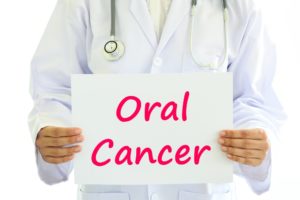 The unfortunate truth is that anyone can develop oral cancer. It is one of the most common forms of skin cancer. Another unfortunate truth is that one person dies of oral cancer every hour of every day. Oral cancers are included within the group of head and neck cancers, and comprise of close to 85 percent of that category. Oral cancer is particularly dangerous because the patient may not notice it, or be aware of what to look for. The death rate tends to be high for this type of cancer for that very reason–late discovery. The good news is that when discovered in its earliest stages the survival rate is 80 to 90 percent. Although anybody can develop oral cancer, certain people are at higher risk than others.
The unfortunate truth is that anyone can develop oral cancer. It is one of the most common forms of skin cancer. Another unfortunate truth is that one person dies of oral cancer every hour of every day. Oral cancers are included within the group of head and neck cancers, and comprise of close to 85 percent of that category. Oral cancer is particularly dangerous because the patient may not notice it, or be aware of what to look for. The death rate tends to be high for this type of cancer for that very reason–late discovery. The good news is that when discovered in its earliest stages the survival rate is 80 to 90 percent. Although anybody can develop oral cancer, certain people are at higher risk than others.
Oral Cancer
Oral cancer can strike anyone, but there are certain factors than can increase your risk. Some of those factors include:
Gender: Although this seems to be decreasing, oral cancer and oropharyngeal cancer–which includes cancers found on the soft palate, the base of the tongue, the tonsils, and the pharynx–are twice as common in men as in women.
Age: Two-thirds of patients who present with oral cancer are over 55.
Tobacco use: About 80 percent of people who develop oral cavity and oropharyngeal cancers are tobacco users whether in the form of cigarettes, chewing tobacco, or snuff.
Alcohol: Of those patients diagnosed with oral cancer, about 70 percent heavily consume alcohol. For those people who both drink and smoke heavily, the risk is two-fold.
Human papillomavirus (HPV): The HPV virus, which has been linked to cervical cancer, is also a risk factor for oral and oropharyngeal cancers.
What to Look For
Oral cancer often presents as lesions, or red or white patches on the:
- Gums
- Cheeks
- Tongue
- Lips
- Throat
Other symptoms can include:
- Mouth sores that don’t heal
- Tenderness
- Bleeding
- Numbness








